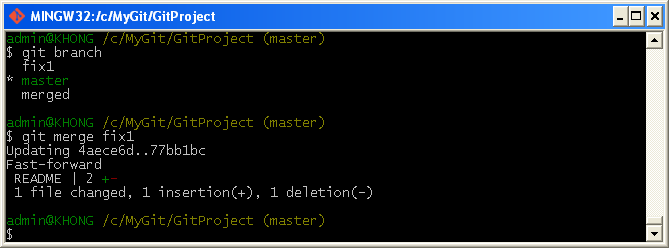

Squashing works much like rebasing a branch, you can take a 5 commit pull

You can also modify this in your repository settings. While this does merge in the PR into the master branch, the resulting git message isn’t very helpful when grepping through git commit messages to figure out what exactly changed when we merged the feature-branch.Īt Rietta, we have disabled the default “Merge pull request” in favor of ether squash merging or rebasing pull requests. The hyperlink provided by the message will take you back to the original PR with commits 3 and 4. This will be the new HEAD.Ĭommit Merge branch feature-branch on the repo Git history will look like Merge branch feature-branch. When using Merge pull request, (assuming that nothing has been merged into master previously) commits 3 and 4 will be added to the master branch as a commit, which we will call Merge branch feature-branch. After doing some work, we’ll have 2 additional commits Three and Four in which we want to merge into master. To work on a new feature, we’ll branch off of master branch and create a new branch called feature-branch.

So for example, we have a base master branch with an initial commit and 2 new commits, the new commits are One and Two. The default option Merge pull request on Github will take all commits from the pull request and add them to the master branch with a new commit in a merge commit.
#Merge branch with master git hub code
We can apply this way of thinking when we want to keep the master branch Git history clean and helpful to future you and other developers who may be combing through the history to figure out why the code structure is the way it is. Merging with a merge commit, squash merging, and “Rebase & Merge” should be pretty familiar as these are commands that are already commonly used when working on dev branches to keep commits on PRs tidy. GitHub provides three options when merging in commits, these three options being: The latter works to fetch code from a remote repository.Keeping a clean git history can save a lot of time when trying to track down commits related to a bug or issue that is disrupting dev efforts. Git checkout should not be confused with the git clone command. It also orders Git to record new the overall new commits on that branch. When you run the git checkout command it updates the files in your working directory to correspond with the version that is stored in the given branch. This command is primarily used for navigating between the created branches. You can also use it for merging multiple commits in one history. Primarily, the git branch command is used for combining two branches. It works along with the git checkout command for selecting the current branch and the git branch command with the -d option for deleting the obsolete target branch. The git merge command is used for integrating independent lines of development to a single branch. It doesn’t change your repository’s history. They represent a way of requesting a new working directory, staging area, and project history.Īny time you create a new branch, Git will make a new pointer. It makes your history clearer before merging it.īranches can be described as an isolated line of development. Generally, git branch helps you create, list, or delete branches.Įach new branch is created for encapsulating the changes when you wish to add new features or fix current bugs. No matter it's in the local git repository or the remote.

The git branch command is a go-to command for managing all the aspects of your branches. Git commit # adding information to the message of the template merge The git branch Command Git merge -strategy=ours -no-commit master


 0 kommentar(er)
0 kommentar(er)
